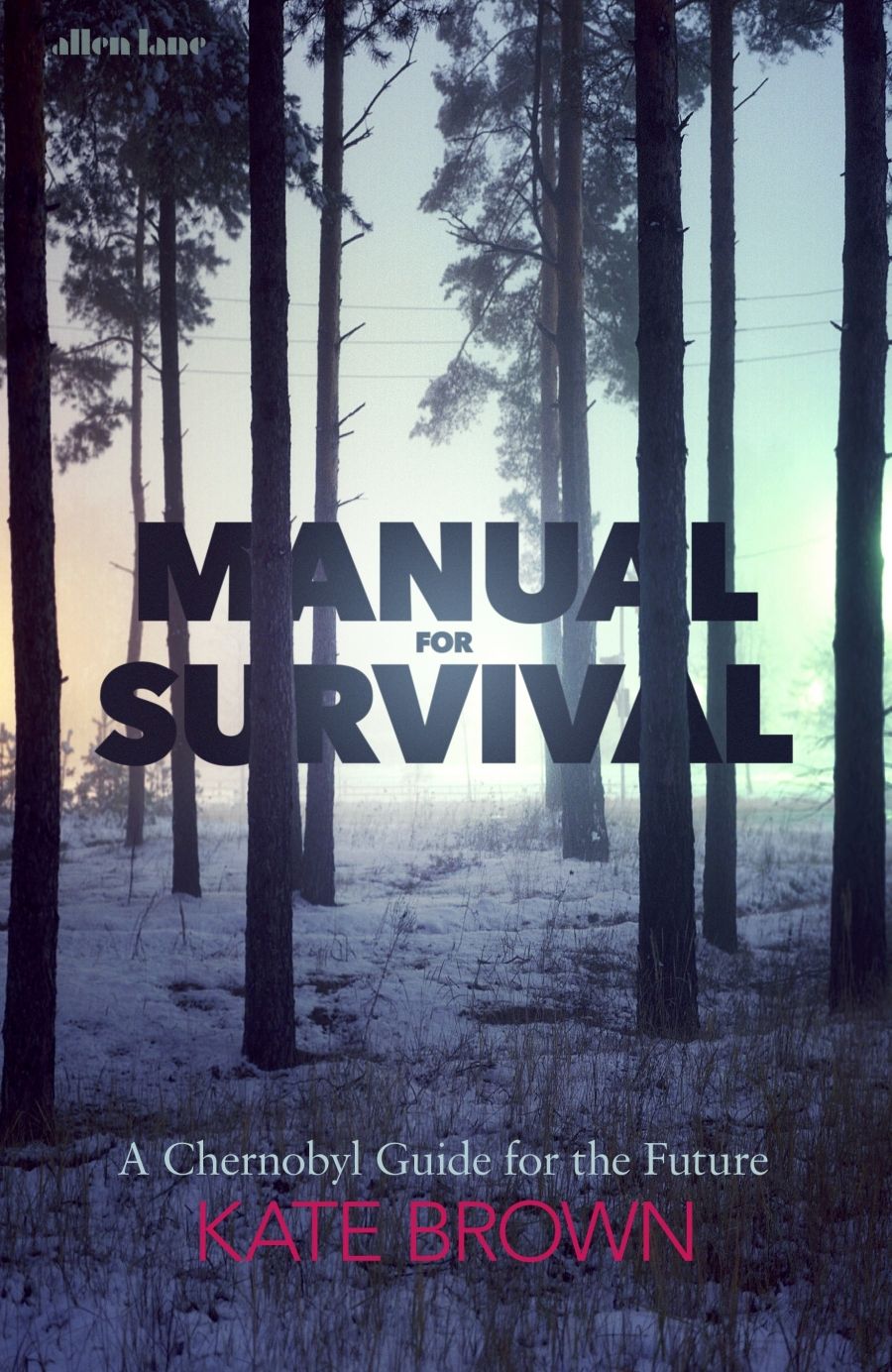
- Free Article: No
- Contents Category: Environmental Studies
- Review Article: Yes
- Custom Highlight Text:
This is a very disturbing book. It’s not just the Chernobyl story, but also Kate Brown’s broader story about the worldwide but inadequately studied impact on public health of lifetime exposure to ‘chronic doses of man-made radiation from medical procedures, nuclear reactors and their accidents, and atomic bombs and their fall-out’. But let’s take Chernobyl first ...
- Book 1 Title: Manual for Survival
- Book 1 Subtitle: A Chernobyl Guide to the Future
- Book 1 Biblio: Allen Lane, $45 hb, 420 pp, 9780241353069
For readers of a sceptical turn of mind, stories of multiple cover-ups provoke a certain wariness about conspiracy theorists or well-meaning alarmists. Brown, a respected American Soviet historian of original and independent mind who knows the region well from her prize-winning book on the Soviet Union’s Western borderlands, A Biography of No Place (2005), is neither of those things. A gifted environmental historian, she knows (literally) how to walk through bogs. But she also knows about archives, and this book shows what you can find out not only from the archives of governments and international agencies but also from Belorussian and Ukrainian public health departments, a completely untapped source from which she draws fascinating statistical material and reports.
While the archives disclosed cover-ups, they also disclosed whistle-blowers – local doctors and scientists who tried to get stories of health damage out into the public arena, and who were often punished or sidelined as a result. Brown tracked many of them down and interviewed them, respecting their expertise on local conditions and finding in retrospect that their data and conclusions stand up a lot better than those of the visiting firemen sent in by Soviet and international agencies. The local people who, at cost to themselves, persisted in gathering data are the real heroes of the story.
Fifty-four is the often-quoted UN-endorsed figure for direct fatalities from the Chernobyl disaster, which began on 26 April 1986. Brown is less interested in immediate fatalities than she is in long-term damage to public health from a contaminated environment much larger than most people wanted to acknowledge; nevertheless, her narrative is dotted with individual cases of Chernobyl-related deaths that, for one reason or another, were not included in the official figure. She points out that the Ukraine is currently paying compensation to 35,000 people whose spouses died from Chernobyl-related health problems – and that doesn’t count the people (including children) without spouses, or for that matter anyone in Russia and Belorussia, which received seventy per cent of the fallout. So 35,000, not fifty-four, should be considered the absolute minimum figure for deaths. In addition, there was the broader impact on public health. Some years after the accident, ‘the majority of people and especially children in the contaminated regions were sick. Residents had chronic diseases, many suffering from several diseases at once … Tests showed people had ingested a wide range of radioactive nuclides and that some bodies had achieved the levels regulated as radioactive waste.’
 A helicopter sprays a decontamination liquid nearby the Chernobyl reactor in 1986 (Photograph by USFCRFC / IAEA Imagebank via Wikimedia Commons)
A helicopter sprays a decontamination liquid nearby the Chernobyl reactor in 1986 (Photograph by USFCRFC / IAEA Imagebank via Wikimedia Commons)
What about the larger story? Brown sees Chernobyl not so much as a unique event but rather as an acceleration on a time-line of exposures in the ‘raddled’ environment of the Pripyat Marshes, one in a series of nuclear and other environmental disasters inflicted on the region in the second half of the twentieth century – two world wars fought on its territory, plus a bombing range during the Cold War – ‘that makes the greater Chernobyl zones, where people continue to live, good places to investigate the outer limits of human endurance in the age of the Anthropocene, the epoch when humans became the force driving planetary change’. Chernobyl’s survivors, many of whom Brown interviewed, get by as best they can, despite their own and their children’s multiple health problems. One of their recent sources of income is exporting berries, always a major part of the local summer diet (though foreign researchers ignored this) and also highly liable to contamination. The berries are ‘all radioactive’, as a local monitor explains, ‘but some are really radioactive’. Fortunately for the local economy, it’s possible to meet European Community and American standards by mixing the ‘really radioactive’ berries in with others. A possibly apocryphal story is told of a truck ‘with a “radiating mass” in its trailer’ inspected at the US–Canada border, raising concern that someone was trying to smuggle in a dirty bomb. When they found out that it was only berries from the Ukraine, they waved it through.
‘American, Canadians, Europeans may wake to a breakfast of Chernobyl blueberries,’ Brown writes. In Australia, we import blueberries from the United States but not, as far as I know, from the Ukraine. But that wouldn’t make us safe from health damage from multiple exposures to low-level radiation, since this is not just a Chernobyl problem but a worldwide one: Chernobyl emissions of radioactive iodine were only a third of those from decades of US nuclear bomb tests in Nevada detonation during the Cold War. Rates of thyroid cancer in the United States tripled between 1974 and 2013. Over the same period, sperm counts among men in North America, Europe, Australia, and New Zealand dropped by fifty per cent. ‘Australia, hit by fallout from the British and French tests, has the highest incidence of childhood cancer worldwide.’ As Brown is careful to point out, these are correlations, not causal links; and her Manual for Survival doesn’t offer drastic solutions, only further study. The message I took away was that, like the Chernobyl survivors, we just have to learn to live with it. But, to repurpose Scott Morrison’s favourite idiom, how depressing is that?


Comments powered by CComment